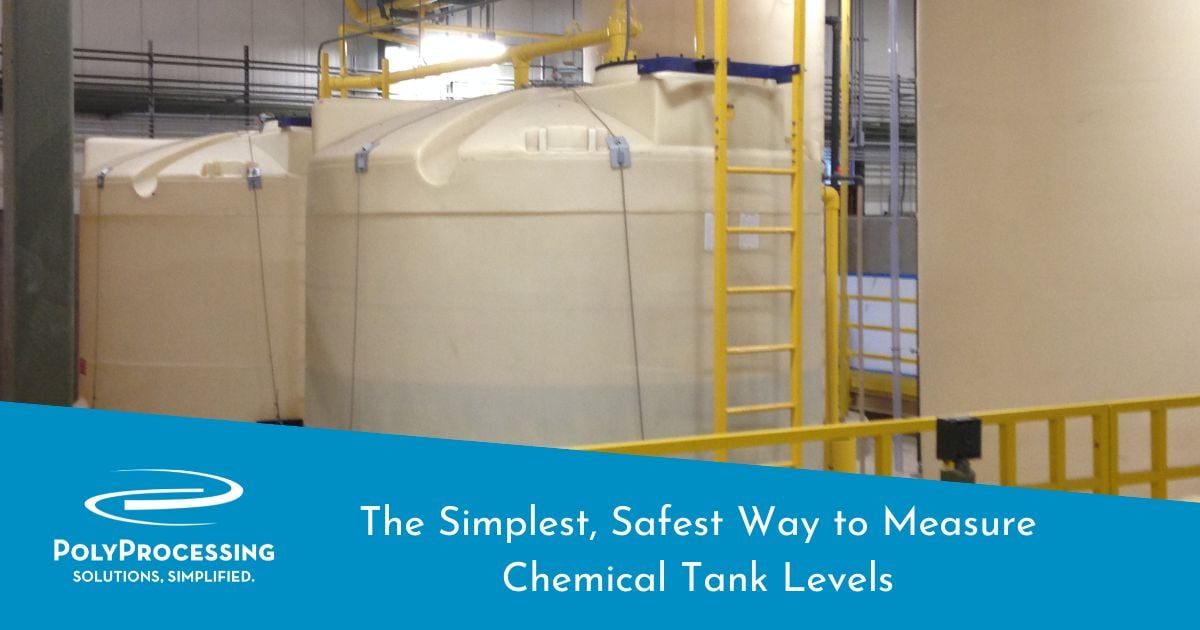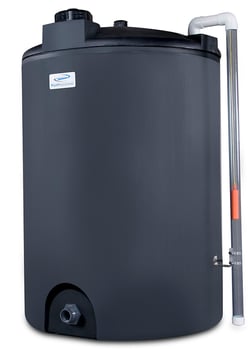The Simplest, Safest Way to Measure Chemical Tank Levels
Reliably knowing the level of the liquid in your chemical storage tank is critical to maintaining your operations without interruption. Not only is the level an indicator for ordering more chemicals, but certain chemicals have to be stored at a specific level to maintain their properties or operational requirements.

A level gauge monitors the liquid level of the chemical you’re storing in your polyethylene chemical tank. There are several types of level gauges, including clear tube level gauges and ultrasonic level gauges. While Poly Processing can provide a variety of level indicators, we almost always recommend our reverse float gauge.
What Is a Reverse Float Level Gauge?
A reverse float level gauge indicates how full your chemical storage tank is, in reverse. The lower the indicator, the fuller the tank. The reverse indicator is the result of a simple design that provides an accurate indication. While it may take a moment to get used to, the reverse float gauge makes it easy to know how much chemical is in your tank, from outside the tank wall.
The reverse float gauge can be counterintuitive at first, but it’s an elegant and simple solution that gives you a clear reading from outside of the tank. The level system contains a float inside the tank, which is connected by a rope to a weighted level indicator. The level indicator is housed in a clear PVC vertical tube along the exterior sidewall of the tank.
As the tank is filled, the chemical lifts the float, and the pulley system moves the weighted indicator downward. As the tank empties, the float inside the tank lowers, pulling the indicator on the outside upwards.
In essence, you’re looking at an upside-down representation of the chemical’s level in the tank. When the tank is full, the visual indicator is at the bottom of the tube, and when the tank is empty it’s at the top. It is a reverse indication of the level in the chemical tank—thus, a reverse float level gauge.
Advantages of a Reverse Float Level Gauge
Unlike many other level gauges, the reverse float level gauge is a simple system that doesn’t require channeling the chemical to the outside of the tank in order to see the level. The reverse float level system can be used on almost any tank, including double-walled SAFE-Tanks. That gives you several advantages, including:
- No sidewall tank penetrations or chemical exposure
- All joints are dry-fit for easy part replacement
- Internal float works with any chemical
- No stains on clear pipe from chemicals or UV attack
- No siphoning of the tank if the pipe breaks
- No chemical burns or chemical spurts on operators
- Chemical-resistant rope ensures long useful life
- Reverse calibration tape can be added for tank capacity
- Verifies ultrasonic or other electronic level sensor
- Standard or free standing pipe supports are available
With this many advantages, the reverse float level gauge has Poly Processing’s strong endorsement.
To find out about other applications for a reverse float level gauge, talk to a chemical storage expert.
- July 24, 2023
- Topics: Fittings and Accessories, FAQs
About Poly Processing
Posts By Topic
Tech Talk Podcast Episodes
Subscribe By Email
Recent Posts
- Installation Tips for Chemical Storage Tanks: Site Preparation and Offloading
- Understanding pH and Chemical Concentration When Choosing a Chemical Tank
- Maximizing Fill Efficiency: Selecting the Optimal Fill Line System
- Chemical Storage Tanks: A Quick Guide for End Users
- Popular Customization Options for Chemical Storage Tanks
Tank Configurator

Find the recommended tank and system components for your chemical storage challenge.
Configure a Tank Package



